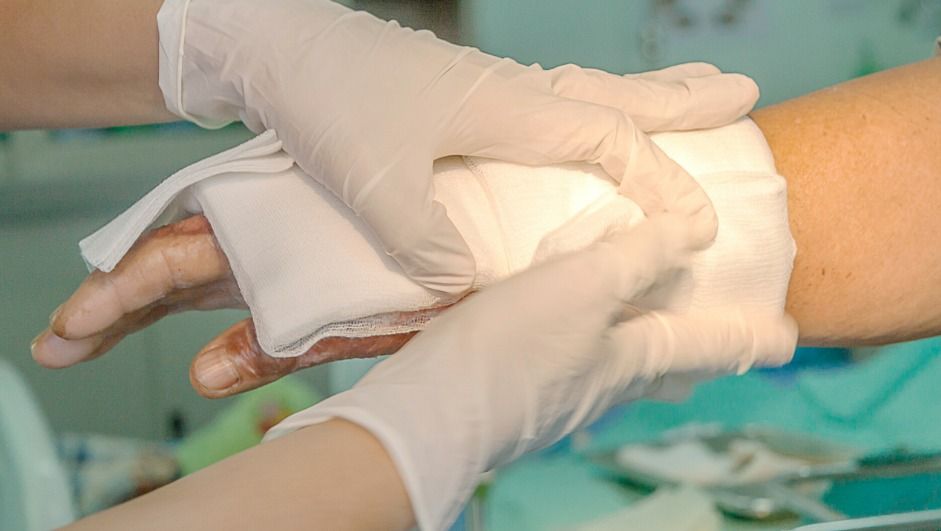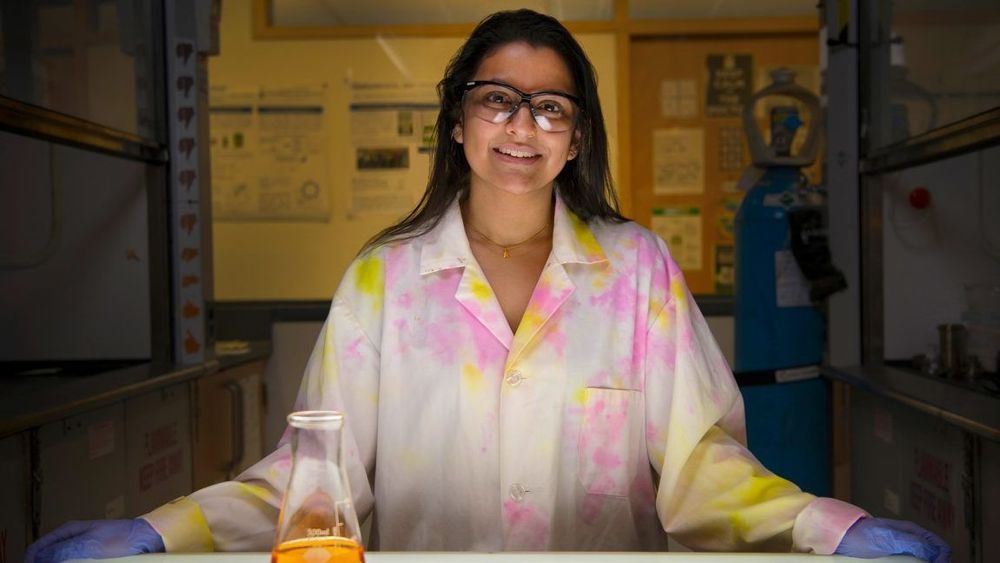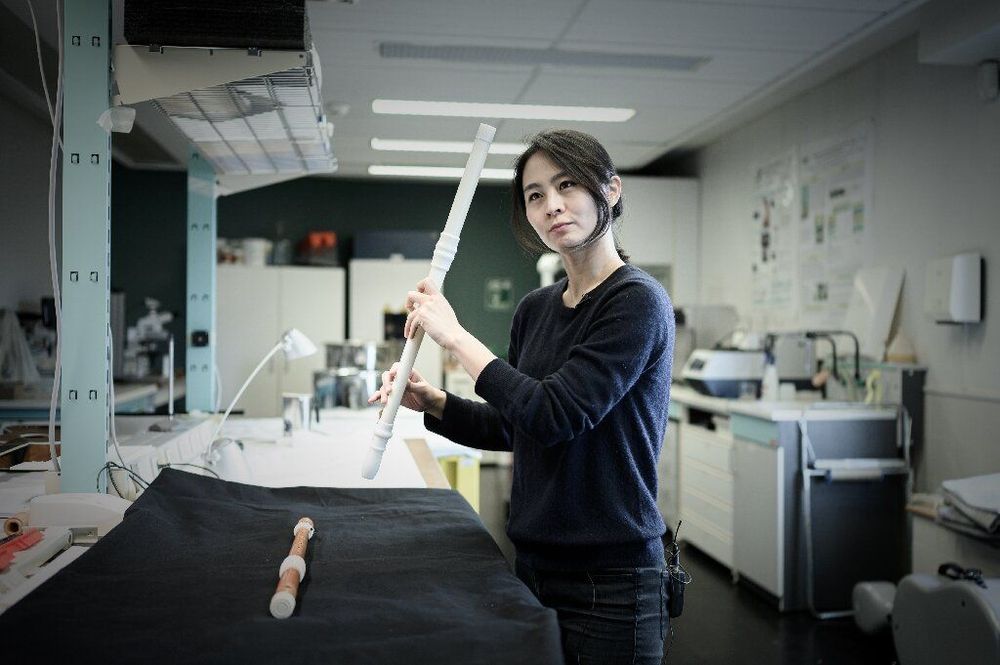This is the first-ever 3D-printed human heart model using human cells #ValentinesDay
Category: 3D printing – Page 66
3D Printing Is Changing the World | VICE on HBO
3D-printing innovations in recent years have brought a sea change in the fabrication of everything from automobile parts to human bio-tissues.
VICE’s Krishna Andavolu delves into the cutting-edge research behind what’s being called the next industrial revolution, meeting the scientists and entrepreneurs pushing the boundaries of manufacturing, material science, and even space exploration.
Check out VICE News for more: http://vicenews.com
Follow VICE News here:
Facebook: https://www.facebook.com/vicenews
Twitter: https://twitter.com/vicenews
Tumblr: http://vicenews.tumblr.com/
Instagram: http://instagram.com/vicenews
More videos from the VICE network: https://www.fb.com/vicevideo
#VICEonHBO

Handheld bioprinter for treating burns at the point-of-care
A burn that is over 25% of the human body area can be life threatening. However a burn that is only 1 percent but on a visible area of the body can be life-worsening. That is why advancements in the area of wound care and burns treatment are so important from patient perspective. Being a doctor of the future will include having a point-of-care device such as a 3D-Bioprinter that will scan the lesions in dept and width and print a gel imbued with cells and prolo-factors.
Forgive me my conservatism… we already have such clinics that are on the clinical trials for such treatments.
Read more in the article. Stay tuned for more topics through the Academy blog. Gain more knowledge in Regenerative Medicine and practical experience with biologics through the Annual Congress — Global Regenerative Congress 18–20 September 2020 in Dubai. Registrations are open: www.grc2020dubai.com
Researchers from the University of Toronto (ON, Canada) have reported success in trials of a handheld bioprinter for treating serious burns and wounds.
Handheld Skin 3D Printer Can Help Burn Victims
This handheld 3D printer deposits layers of skin tissue, and could one day help to heal deep wounds. Instead of waiting for skin patches to grow in a Petri dish, you apply it directly.
A team of Canadian scientists has successfully applied skin tissue to burn wounds using a handheld 3D printer. This technology may become a game-changer in the way severe burn victims are treated.
The handheld skin 3D printer, the work of scientists at the University of Toronto Engineering and Sunnybrook Hospital, was first shown back in 2018. Since then it has undergone a major redesign that improves upon the initial model’s functionality.
3D Printed Human Corneas To Cure Blindness Are Here
Scientists at Newcastle University, in the United Kingdom, have 3D printed the world’s first real human corneas. This is unbelievable news since today, there is a significant shortage of corneas available for transplant. In the future, this printing technique could be used to ensure an unlimited supply of corneas.
The cornea is the outermost layer of the human eye and it has an important role in focusing vision. Statistics show that there are currently 10 million people worldwide requiring surgery to prevent corneal blindness as a result of diseases such as trachoma, an infectious eye disorder. On top of that, there are an additional 5 million people who suffer total blindness due to corneal scarring caused by burns, lacerations, abrasion or disease.

3D Printed Heads Can Unlock Phones. What Does that Mean for Biometric Security?
Facial recognition technology is likely not as safe as you may have thought. This was illustrated by a recent test where 3D printed busts of peoples’ heads were used to unlock smartphones.
Out of five tested phones, only one refused to open when presented with the fake head.
Other biometric security measures are also showing less resilience to hacking than you might expect. A group of Japanese researchers recently showed it was possible to copy a person’s fingerprints from pictures like the ones many of us post on social media.


Researchers Turn Old Cooking Oil from McDonald’s into Resin for 3D Printing
Researchers at the University of Toronto Scarborough transformed used cooking oil from deep fryers at McDonald’s into a biodegradable resin.
Turns out that leftover cooking oil in McDonald’s deep fryers is actually good for 3D printing.
Researchers at the University of Toronto Scarborough were able to turn it into a biodegradable resin, they announced in a press release.

Cloning musical heritage in the key of 3D
When Mina Jang played the same melodious tune on two different flutes behind a screen, she said the examiners grading her couldn’t tell the difference.
Yet the two instruments were made in dramatically different ways.
One was a handmade version of an original early 18th-century flute crafted in 2001, while the other was made of white plastic and “cloned” using a 3D printer in 2019.

Coalition of states sue over rules governing 3D-printed guns
Attorneys general in 20 states and the District of Columbia filed a lawsuit Thursday challenging a federal regulation that could allow blueprints for making guns on 3D printers to be posted on the internet.
New York Attorney General Tish James, who helped lead the coalition of state attorneys general, argued that posting the blueprints would allow anyone to go online and use the downloadable files to create unregistered and untraceable assault-style weapons that could be difficult to detect.
The lawsuit, joined by California, Washington and 17 other states, was filed in U.S. District Court in Seattle. It is likely to reignite a fierce debate over the use of 3D-printed firearms and is the latest in a series of attempts by state law enforcement officials to block the Trump administration from easing the accessibility of the blueprints.